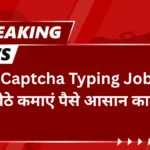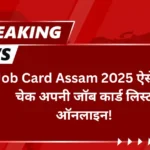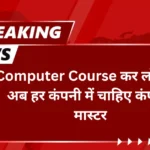Struggling with savings, budgeting, or understanding where your money goes?
Our Personal Finance & Money Management Course is perfect for students, professionals, and entrepreneurs who want to take control of their finances.
Learn the practical skills of budgeting, saving, investing, and planning for your financial future.
💡 What You Will Learn
- Basics of Personal Finance: Income, Expenses, Assets & Liabilities
- Budgeting Techniques & Expense Tracking
- Smart Saving Habits & Emergency Fund Planning
- Basics of Income Tax & Tax Saving Tips
- Digital Payments, UPI, Credit Cards & Online Banking
- Investment Basics: FD, Mutual Funds, SIP, PPF
- Financial Goal Setting & Wealth Planning
- Avoiding Common Money Mistakes
⏳ Course Duration
Duration: 1 Month
Mode: Online / Offline
🎯 Who Should Join?
- College Students & Young Professionals
- Salaried Employees & Freelancers
- Small Business Owners
- Homemakers
- Anyone interested in improving money habits
💼 Career Benefits
- Improved Personal Budgeting & Expense Control
- Smarter Financial Decision-Making
- Better Credit & Debt Management
- Foundation for Advanced Financial Certifications (CFP, CFA, etc.)
🎁 Extra Benefits
- Monthly Budget Templates (Excel + Google Sheets)
- Financial Planning Checklist
- Certificate of Completion
- Access to Community Forum for Money Tips
📋 Course Syllabus (Module-wise)
| Module | Topics |
|---|---|
| Module 1 | What is Personal Finance? Understanding Your Income & Expenses |
| Module 2 | Budgeting Techniques: 50/30/20 Rule, Envelope System |
| Module 3 | Smart Saving Habits, Emergency Fund & Goal-Based Saving |
| Module 4 | Basics of Tax, PAN Card, Tax-Saving Instruments |
| Module 5 | Introduction to Investments: FD, RD, Mutual Funds, SIP |
| Module 6 | Credit Cards, EMI, Loans & Debt Trap Awareness |
| Module 7 | Digital Financial Tools: UPI, Banking Apps, Wallets |
| Module 8 | Long-term Financial Planning & Common Money Mistakes |
🔥 Why Choose computeracademy.in?
- Simplified Concepts with Real-Life Examples
- Designed for Non-Finance Background Learners
- Flexible Timings + Affordable Fee
- Hindi-English Mixed Language for Easy Understanding
- Lifetime Access to Course Resources
📞 How to Enroll?
👉 Call: +91-XXXXXXXXXX
👉 Email: info@computeracademy.in
👉 Or Fill this Enrollment Form
Take control of your money – become financially confident in just 30 days!











1 thought on “Personal Finance & Money Management Course 2025 | Learn Budgeting & Saving”
Comments are closed.